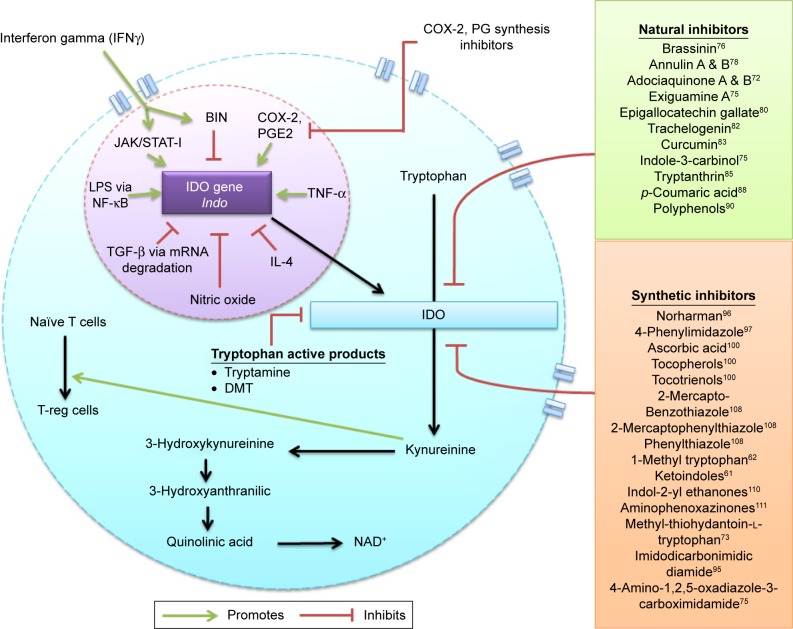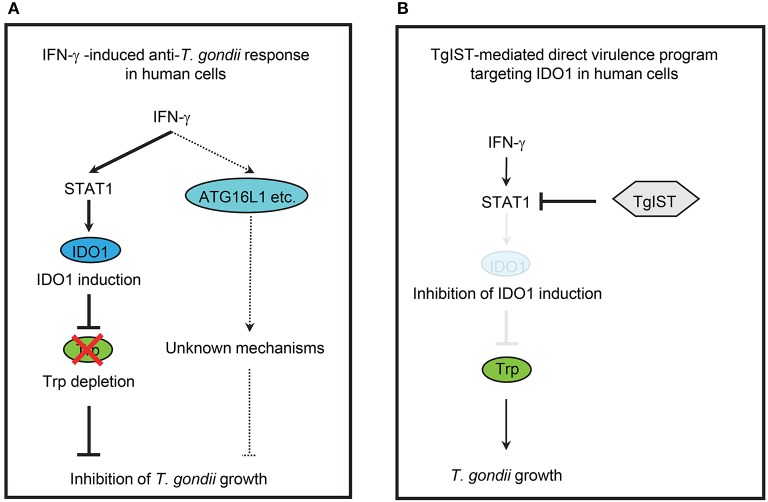IDO1 Target Analysis Report Summary


About the Target
IDO1 is an important enzyme involved in tryptophan catabolism through the kynurenine pathway. It can be upregulated by various factors such as IFN-gamma, TNF-alpha, and LPS, while downregulated by IL-4 and TGF-beta. Inhibitors of IDO1 have been extensively studied [1]. IDO1 inhibitors can increase T-cell activation at the site of tumor cells, making them potential therapeutic agents for cancer treatment [2]. Additionally, IDO1 activity plays a crucial role in the metabolism of tryptophan in the gastrointestinal tract, affecting mucosal defense, mucin production, and tight junction proteins [3]. Furthermore, IDO1 is involved in the anti-T. gondii immune response and its growth inhibition in human cells [4]. Combined neutralization of PD-L1 and TGF-beta1 with inhibition of IDO1 has been shown to reverse immune suppression in peritumoral cells [5].
In the context of the study, the researchers investigated the effects of kynurenic acid (KYNA), an IDO1 metabolite, on TSG-6 production in human umbilical cord mesenchymal stem cells (HUC-MSCs) through the activation of the aryl hydrocarbon receptor (AhR) signaling pathway [6]. They found that MSCs expressed high levels of AhR compared to other receptors [6a]. KYNA treatment led to increased translocation of AhR to the nucleus, suggesting the activation of AhR signaling in MSCs [6b]. This was further supported by the increased expression of AhR-regulated metabolic enzymes, CYP1A1 and CYP1B1 [6c]. KYNA also enhanced the binding of AhR to the TSG-6 promoter, promoting TSG-6 expression [6e]. The researchers observed that KYNA treatment resulted in enhanced TSG-6 production by HUC-MSCs [6d]. Additionally, KYNA inhibited immune cell infiltration in a peritonitis model, further enhancing the therapeutic effect of HUC-MSCs [6, Supplementary Fig. 6]. Overall, KYNA, an IDO1 metabolite, was able to activate AhR signaling, leading to increased TSG-6 production in HUC-MSCs [6].
Figure [1]

Figure [2]

Figure [3]

Figure [4]

Figure [5]

Figure [6]

Note: If you are interested in the full version of this target analysis report, or if you'd like to learn how our AI-powered BDE-Chem can design therapeutic molecules to interact with the IDO1 target at a cost 90% lower than traditional approaches, please feel free to contact us at BD@silexon.ai.
More Common Targets
ABCB1 | ABCG2 | ACE2 | AHR | AKT1 | ALK | AR | ATM | BAX | BCL2 | BCL2L1 | BECN1 | BRAF | BRCA1 | CAMP | CASP3 | CASP9 | CCL5 | CCND1 | CD274 | CD4 | CD8A | CDH1 | CDKN1A | CDKN2A | CREB1 | CXCL8 | CXCR4 | DNMT1 | EGF | EGFR | EP300 | ERBB2 | EREG | ESR1 | EZH2 | FN1 | FOXO3 | HDAC9 | HGF | HMGB1 | HSP90AA1 | HSPA4 | HSPA5 | IDO1 | IFNA1 | IGF1 | IGF1R | IL17A | IL6 | INS | JUN | KRAS | MAPK1 | MAPK14 | MAPK3 | MAPK8 | MAPT | MCL1 | MDM2 | MET | MMP9 | MTOR | MYC | NFE2L2 | NLRP3 | NOTCH1 | PARP1 | PCNA | PDCD1 | PLK1 | PRKAA1 | PRKAA2 | PTEN | PTGS2 | PTK2 | RELA | SIRT1 | SLTM | SMAD4 | SOD1 | SQSTM1 | SRC | STAT1 | STAT3 | STAT5A | TAK1 | TERT | TLR4 | TNF | TP53 | TXN | VEGFA | YAP1

